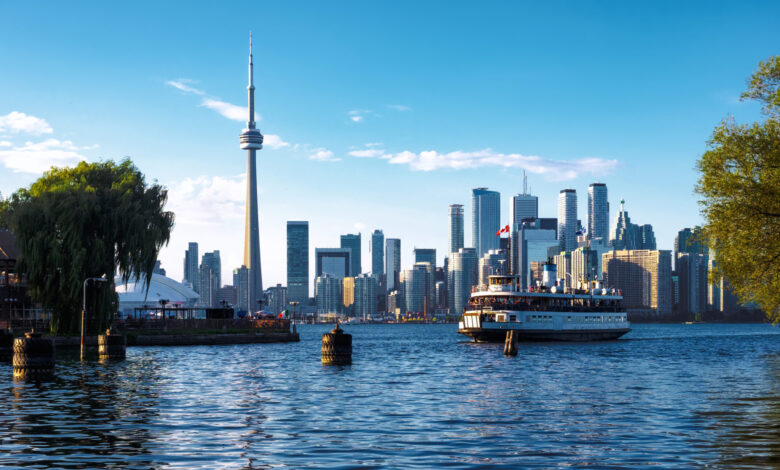Internationally-Educated Physicians Needed To Work As Family Doctors In Ontario

Are you a candidate with skills and qualifications in one of Canada’s 82 jobs for occupation-specific Express Entry draws? We want to help you move to Canada. Please submit your CV here.
A growing number of family medicine residencies are going unfilled in Ontario despite the province nominating a record number of healthcare workers through its Ontario Immigrant Nominee Program (OINP) last year.
In the first match-up this year of medical school graduates with residency placements, 108 spots remained unfilled out of 560 in Ontario, reports Canadian Residency Matching Service (CaRMS).
That’s up from 103 unfilled spots during the comparable matchup last year.
The growing paucity of family physicians comes in the wake of the OINP nominating a record number of internationally-educated healthcare workers for immigration to Canada last year, more than 2,000 of them.
Last year, roughly 12 per cent of all OINP nominations were made to healthcare workers.
Read More Canada Immigration News
Canada Welcomes Growing Numbers Of Ukrainians As CUAET Deadline Looms
Trudeau Refuses Quebec’s Request For Full Power Over Immigration
Start Of 2024 Sees Canada Spousal Sponsorship Immigration Slow
Those included:
- pharmacists;
- general practitioners and family physicians;
- registered nurses and registered psychiatric nurses;
- dentists, and;
- nurse aides, orderlies and patient service associates.
“Demand for the OINP continues to be strong with the OINP issuing its largest number of nominations in its history in 2023,” noted the OINP website.
“In 2023, the province’s nomination allocation from the federal government was 16,500 nominations. The OINP met its full 2023 nomination allocation in December.”
Even though 2.3 million Ontarians lack access to a family doctor, many medical school graduates are taking a pass on the opportunity to practice family medicine in the province.
“What this tells us is that medical students are not applying to family medicine,” Dr. David Barber, chair of Ontario Medical Association’s section on family practice, reportedly told CBC News.
“It’s because during medical school the students work with family doctors and train under family doctors. They see how stressful it is, how underfunded it is and how unhappy that the family doctors are.”
The claimed underfunding of healthcare services in Ontario is currently being addressed in negotiations for a new physician services agreement since the current contract that covers how physicians are paid n Ontario is set to expire at the end of March.
Ontario In Negotiations For New Physician Services Agreement
In a statement, Health Minister Sylvia Jones noted the province has expanded medical school spots and boosted the number of interdisciplinary primary care teams by 78.
Last year, Ottawa lifted some of the restrictions faced by internationally-educated physicians when it comes to moving to Canada and living and working here.
Under the Temporary Public Policy to Facilitate the Issuance of Permanent Resident Visas for Physicians Providing Publicly-Funded Medical Services in Canada, which Immigration, Refugees and Citizenship Canada (IRCC) put in place on Apr. 25 last year, the exemptions impact the Canadian Experience Class (CEC) and the Federal Skilled Worker Program (FSW) and how points are earned through the Express Entry’s Comprehensive Ranking System for Canadian work experience and arranged employment.
“These measures will enable more foreign national physicians to qualify for federal economic permanent residence programs managed by Express Entry and to qualify for more points in the Express Entry system, increasing their chances of receiving an invitation to apply for permanent residence,” the IRCC noted on its website.
Many physicians working in Canada are self-employed and so their work experience has until now not been recognized as eligible under the CEC. Physicians coming to Canada also often do not receive job offers for a full year, making those job offers until now ineligible under the FSW.
The temporary policy put into effect late last year attempted to remove these restrictions for internationally-trained physicians coming to work in Canada.
“With these exemptions, qualifying physicians … have a greater likelihood of meeting the eligibility requirements of the FSW and CEC and entering the Express Entry pool,” noted then-Immigration Minister Sean Fraser in amendments to his ministerial instructions.
Watch Video
“Additionally, with relevant and complementary changes to the Express Entry ministerial instructions, foreign national physicians … have an increased chance of receiving an Invitation to Apply (ITA) for permanent residence.”
Ottawa’s move to encourage more international physicians to immigrate to Canada came in the wake of a report by the Royal Bank of Canada stating the physician shortage in Canada was already at a crisis level and is only going to get worse unless the country could attract more internationally-trained physicians through federal and provincial immigration programs.
“Canada is estimated to be short nearly 44,000 physicians, including over 30,000 family doctors and general practitioners, before the end of the decade,” reported RBC in its Proof Point: Canada Needs More Doctors—And Fast report.
“Though 2,400 family physician positions were advertised on government websites by the end of 2021, just 1,496 family doctors exited residency training that year.”
In Canada, family physicians, National Occupational Classification 2021 (NOC) code 31102, earn a median annual income of $233,726 but that varies wildly based on the where in the country the physician is practicing and how many years of experience he or she has, the federal job-hunting and career-planning Job Bank website reveals.
Prospects For Family Physicians Very Good Throughout Canada
Job Bank describes the prospects for physicians and specialists as “very good”, its highest ranking, throughout the country through to the end of 2031.
“For general practitioners and family physicians, over the period 2022 – 2031, new job openings (arising from expansion demand and replacement demand) are expected to total 48,900 , while 29,400 new job seekers (arising from school leavers, immigration and mobility) are expected to be available to fill them,” notes the job-hunting and career-planning website.
In addition to the CEC and FSW, physicians can immigrate to Canada through the Provincial Nominee Programs (PNP) if they meet particular regional labour market needs and intend to settle in that province or territory. Provinces can recruit candidates from the Express Entry pool or they can nominate individuals under their non-Express Entry paper-based streams.
Across the country, there are PNP streams specifically aimed at helping physicians immigrate to Canada, including:
- the Saskatchewan Health Professionals stream;
- Nova Scotia’s Physician stream and Labour Market Priorities for Physician stream, and;
- British Columbia’s Health Authority stream.
But before a physician can practice in Canada, he or she needs to have his or her qualifications recognized.
The national organization that sets standards for physicians, including immigrating physicians, is the Ottawa-based Medical Council of Canada (MCC). It does not confer or issue licences to physicians. That responsibility belongs to the provincial and territorial medical regulatory authorities.
Instead, the MCC’s role is to grant a qualification in medicine known as the Licentiate of the Medical Council of Canada (LMCC) to medical graduates who:
- have passed the Medical Council of Canada Qualifying Examination (MCCQE) Part I and Part 2, or an acceptable clinical assessment deemed comparable to the MCCQE Part II, and;
- have satisfactorily completed at least 12 months of acceptable postgraduate training or an acceptable equivalent.
With a LMCC document in hand, physicians intending to practice in Canada then have to enroll in the Canadian Medical Register to meet the Canadian Standard, a set of academic qualifications that makes an applicant eligible for full licensing in every Canadian province and territory.
Family physicians applying for the first time to become licensed to practise medicine in a Canadian jurisdiction may achieve full licensure only if they meet the following:
- have a medical degree from a medical school that, at the time the candidate completed the program, was listed in the World Directory of Medical Schools;
- are a Licentiate of the Medical Council of Canada;
- have satisfactorily completed a discipline-appropriate postgraduate training program in allopathic medicine and an evaluation by a recognized authority, and;
- have achieved certification from the College of Family Physicians of Canada or the Royal College of Physicians and Surgeons of Canada or the Collège des médecins du Québec.
That is for full licensure to practice anywhere in Canada. Many foreign-trained doctors start their practices with a provisional license.
In Canada, a foreign-trained physician’s credentials may meet the licensure requirements of one province but not another.
MCC Offers Doctors A Credential Verification Service
The MCC offers a credential verification service through a website, PhysiciansApply.ca. This is a comprehensive website where medical students and graduates can create an account.
PhysiciansApply.ca provides a wide range of features and services to help medical students and graduates through the process of becoming practicing physicians in Canada.
Some of those features and services include:
- applying for exams including the MCCQE1 and MCCQE2;
- medical registration;
- sharing credentials with medical regulatory authorities and other organizations, and;
- providing an orientation to the communication and cultural challenges facing physicians new to Canada.
As an International Medical Graduate, the first step for a physician intending to practice in Canada is to see if their medical college will be readily acceptable to the licensing body, the medical college, in each province.
It is the physician’s responsibility to check whether his or her medical school is listed in the World Directory of Medical Schools, something that can be done by visiting WDOMS.org.
Once a physician finds his or her college in that online directory, the next step is to check the “Sponsor Note” tab and see if it states “Canada Note”. This means medical degrees obtained from this medical school are acceptable to the provincial and territorial medical regulatory authorities in Canada and therefore acceptable to all medical organizations in Canada.
A challenge for many internationally-educated physicians immigrating to Canada is the paucity of residency spots, a bottleneck in the country’s current healthcare system.
“Investment will be needed to expand the capacity of hospital and university networks, to add educators and assessors, and to increase residency spaces in the Canadian medical system,” notes RBC.
“More residency spaces are also needed to align with the increase in medical school student quotas. And streamlining credential recognition for internationally-trained physicians and international medical graduates will be crucial.”




